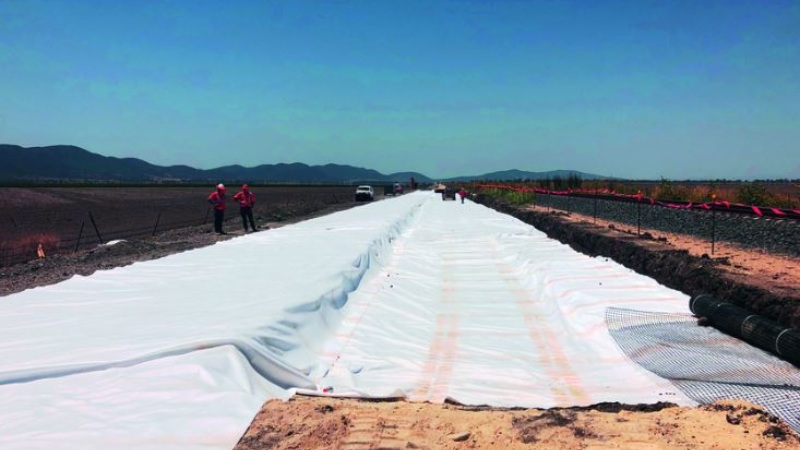We explore which geotextiles are best for drainage
Both woven and non-woven geotextiles are used for a wide range of civil, construction, landscaping, erosion control and drainage applications, however, selecting the right product for the application is key to getting an excellent long-term result.
In this article, we discuss which geotextiles are best suited for drainage. The short answer is usually non-woven geotextiles – but why?
Let’s take a look at the difference between woven and non-woven fabrics and how they respond to drainage applications.
Woven Geotextiles
As the name suggests, these geotextiles are made by weaving synthetic threads together in a tightly woven pattern, making them relatively impermeable. This means that they are not very porous and therefore do not perform well in drainage applications.
Porosity is key to effective drainage, and therefore porous geotextiles are typically what is required for these kinds of applications. We consider non-woven geotextiles more porous compared with woven geotextiles.
However, woven geotextiles offer higher load capacities, which makes them a perfect fit for separation, reinforcement and stabilisation in the construction of pavements. The separation action prevents the mixing of dissimilar soils allowing each layer in the pavement structure to function as intended.
Likewise, this separation quality helps to prevent fines from migrating into the soil below, making these types of geosynthetic fabrics suitable for certain types of erosion control projects.
Non-Woven Geotextiles
Non-woven geotextiles are manufactured from either needle punching or heat bonding synthetic fibres together. These geotextiles help to enhance the performance and design life of granular layers by providing filtration and separation functions.
At Polyfabrics, we only offer needle-punched non-woven geotextiles for superior mechanical strength and hydraulic performance to comply with local road authority technical specifications, such as NSW RMS R63, Qld TMR MRTS 27 & VicRoads.
When stone is placed directly on a soft subgrade, the imposed load often causes intermixing of two layers. This results in contamination of the stone layer and a resulting loss in bearing strength, surface rutting and deformation at the sub-base/subgrade interface.
To combat this, non-woven geotextiles provide an effective solution when constructing a stable granular layer over soft foundation soils.
Plus, in drainage applications, non-woven fabrics prevent the ingress of fines into drainage media, keeping drainage pathways clear and free of debris. Whether it’s a granular drain or a geosynthetic alternative such as an open TerraDrain unit, non-woven geotextiles are ideal for preventing the ingress of fines.
If standing water is an issue, non-woven geotextiles offer a more favourable outcome in managing adequate drainage.
Wrapping up
The needle-punched polyester construction of non-woven geotextiles like mastaTEX Non-woven helps to provide efficient filtration and drainage properties in a wide range of applications.
For advice and support on your project, get in touch with our engineering team at Polyfabrics.

